1. GENERAL BACKGROUND AND SCOPE
1.1 Upon completion of the assessment of total income by the Assessing Officer (AO), the amount of tax payable by the assessee is determined. It is quite common to see huge additions being made, in many cases, which result in huge demands arising as a result of a tax on additions made to the returned income and interest thereon under section 234B (and in cases where the return of income was filed beyond due date than under section 234A as well). The amount determined to be payable by the assessee is stated in the notice of demand issued under section 156 and the amount so mentioned is generally payable within 30 days from the date of issue of the notice of demand. The notice of demand issued under section 156 of the Act accompanies the assessment order.
1.2 Non-payment of the amount specified in the notice of demand, which is validly served on the assessee, within the time mentioned in the notice will mean that the assessee becomes an `assessee in default’ and consequently is liable to not only interest and penalty being levied on the amount of demand which is unpaid but also coercive steps being taken for recovery of the unpaid amount. Refunds of other years may be adjusted against such demands which have arisen as a result of disputed additions.
1.3 As per CBDT Instruction No. 1914 dated 2nd February, 1993 (hereinafter referred to as “the said Instruction”) —
i) the Board is of the view that, as a matter of principle, every demand should be recovered as soon as it becomes due;
ii) the responsibility of collection of the demand is upon the AO and the TRO;
iii) except for demands which are stayed every other demand is required to be collected;
iv) it is the responsibility of the supervisory authorities to ensure that the AOs and the TROs take all such measures as are necessary to collect the demand;
v) mere issuance of show cause notice with no follow-up is not to be regarded as an adequate effort to recover taxes.
1.4 While an assessee may choose to file an appeal against the assessment order, a question arises as to whether an assessee is bound to pay the demand which is disputed by the assessee. Many times, demands are of such a magnitude as would disrupt the smooth functioning of the business of the assessee. If recovery proceedings are to continue in spite of an appeal having been preferred, then the entire purpose of the appeal will be frustrated or rendered nugatory.
1.5 Does the filing of an appeal operate as a stay or suspension of the order appealed against? Is the assessee entitled to a stay of demand or instalments? Is the AO empowered to grant stay in a case where the assessee chooses to file a revision application under section 264? What is the position in case an assessee chooses not to contest the additions? Is granting of stay mandatory? Is AO bound by the Guidelines issued by CBDT? Is the AO bound by the restrictions imposed by the guidelines on exercise by the AO of the discretionary power conferred upon him by the statute under section 220(6) of the Act? These are some of the many questions which arise for consideration and are considered in this article.
1.6 Upon completion of the assessment, demand may arise as a result of —
i) additions made which are accepted by the assessee;
ii) additions which are disputed by the assessee and against which the assessee chooses to file a revision application under section 264 of the Act;
iii) additions which are disputed by the assessee and against which the assessee files an appeal under section 246 or section 246A to the JCIT(A) or CIT(A);
iv) additions which are disputed by the assessee and against which the assessee files an appeal to the Tribunal.
1.7 In a situation of the type referred to in (i) above it is quite unlikely (even unimaginable) that, in actual practice, a stay will ever be granted. Situations of the type mentioned in (ii) and (iv) above will be covered by the powers vested in the AO under section 220(3) of the Act. The situation of the type mentioned in (iii) above will be covered by the power vested in the AO under section 220(6) of the Act.
1.8 The power of the Tribunal to grant a stay of demand is not covered by this article.
2 ARE DECISIONS RENDERED IN THE CONTEXT OF PRE-DEPOSIT PRESCRIPTIONS PLACED BY A STATUTE OF RELEVANCE?
2.1 A plethora of judicial precedents are available in the context of pre-deposit prescriptions placed by a statute. The principles enunciated therein would clearly be relevant while examining the extent of power placed in the hands of the AO in terms of section 220(6) of the Act — National Association of Software and Services Companies (NASSCOM) vs. DCIT [(2024) 160 txmann.com 728 (Delhi HC); Order dated 1st March, 2024]. Courts have while deciding upon the allow ability or otherwise of the writ petitions filed by the assesses against refusal to grant stay by authorities, have based their decision on judicial precedents rendered in the context of pre-deposit prescription placed by a statute and have applied the ratio laid down by such decisions.
2.2 Consequently, this article contains references to decisions rendered in the context of Excise and Customs Laws to the extent it is considered that the said decisions are helpful in the context of the provisions of the Act.
3 NO COERCIVE RECOVERY CAN BE TAKEN DURING THE PENDENCY OF THE RECTIFICATION APPLICATION AND/OR STAY APPLICATION AND/OR TILL SUCH TIME AS STATUTORY TIME FOR FILING THE APPEAL EXPIRES.
3.1 Many times, assessment orders and/or tax computations have mistakes which are apparent on record and can be rectified by the AO under section 154 of the Act. An assessee is well advised to check if either the assessment order and/or the tax computation has any mistakes which are rectifiable under section 154 of the Act. In the event any such mistakes are found, an application should be made to the AO under section 154 of the Act requesting him to rectify these mistakes by passing an order under section 154 of the Act. Para D(iii) of the said Instruction requires the rectification application should be decided within 2 weeks of the receipt thereof. It goes on to say that instances where there is undue delay in deciding rectification applications, should be dealt with very strictly by the CCITs / CITs. In actual practice, this instruction is followed more in breach, and we find rectification applications undisposed for prolonged periods. Be that as it may, till the rectification application is not disposed of coercive steps cannot be taken for recovery of the demand because correct demand should be determined before an assessee can be treated as an assessee in default. For this proposition reliance may be placed on the decision in Sultan Leather Finishers P. Ltd. vs. ACIT [(1991) 191 ITR 179 (All. HC)].
3.2 Also, where an assessee has made an application to the AO for granting a stay of the demand which has arisen, then till the stay application is not disposed of by the AO, no coercive steps can be taken for recovery of the demand —Dr T K Shanmugasundaram vs. CIT & Others [(2008) 303 ITR 387 (Mad HC)] and UTI Mutual Fund vs. ITO [(2012) 345 ITR 71 (Bom.)].
Very recently, the Delhi High Court while deciding the writ petition filed by NASSCOM (supra) has termed the action of the AO in adjusting the refund against demand for AY 2018-19, while application for grant of stay under section 220(6) was pending to be wholly arbitrary and unfair. The court observed “Undisputedly, and on the date when the impugned adjustments came to be made, the application moved by the petitioner referable to section 220(6) of the Act had neither been considered nor disposed of. The respondents have thus, in our considered opinion, clearly acted arbitrarily in proceeding to adjust the demand for AY 2018-19 against the available refunds without attending to that application. This action of the respondents is wholly arbitrary and unfair.” The court allowed the writ petition and remitted the matter back to the AO for considering the application under section 220(6) in accordance with the observations made by the court in its order.
3.3 In a case where a stay application filed by the assessee before the AO is rejected or the AO has granted a stay but the assessee is not satisfied and has preferred an application to the PCIT / CIT for review of the order of AO then till such time as the application filed before the PCIT / CIT is not disposed of the AO cannot take any coercive steps to recover the demand. Para B(iii) of the said Instruction is also suggestive of this interpretation. However, the assessee should keep the AO informed of having preferred a review of his order.
3.4 No coercive action shall be taken till the expiry of the period within which an appeal can be preferred against the order which has resulted in the creation of the demand sought to be recovered — Mahindra and Mahindra Ltd. vs. UOI [(1992) 59 ELT 505 (Bom. HC)].
3.5 The Bombay High Court has in the case of UTI Mutual Fund vs. ITO [(2012) 345 ITR 71 (Bom.)] held that no recovery of tax should be made pending—
i) expiry of the time limit for filing an appeal; and
ii) disposal of a stay application, if any, moved by the Applicant and for a reasonable period thereafter to enable the Applicant to move to a higher forum.
3.6 Recovery of demand arising as a result of high-pitched assessment is dealt with in Para 5 herein.
4 POWER OF THE AO TO GRANT STAY IN A CASE WHERE AN APPEAL HAS BEEN PRESENTED TO JCIT(A) / CIT (A) — SECTION 220(6)
4.1Section 220(6) reads as under —
“(6) Where an assessee has presented an appeal under section 246 or section 246A the Assessing Officer may, in his discretion and subject to such conditions as he may think fit to impose in the circumstances of the case, treat the assessee as not being in default in respect of the amount in dispute in the appeal, even though the time for payment has expired, as long as such appeal remains undisposed of.”
4.2 The following points emerge from the above provision—
i) the AO has the discretion to treat the assessee as not being in default in respect of the amount in dispute (in general parlance it is referred to as a grant stay on recovery of the amount demanded);
ii) the stay may be granted without any conditions or with conditions which the AO may think fit to impose in the circumstances of the case;
iii) the discretion can be exercised only in cases where an appeal has been presented under section 246 or section 246A. In other words, the discretion under this sub-section cannot be exercised in cases where an appeal lies to the Tribunal and/or the assessee chooses to file an application under section 264 instead of filing an appeal under section 246A;
iv) the power may be exercised even after the time for making the payment, as per the notice of demand, has expired;
v) the power can be exercised and stay granted only till the appeal remains undisposed;
vi) the discretion can be exercised only in respect of an amount in dispute in an appeal. In a case where a particular addition can be a subject matter of rectification under section 154, it is advisable that the assessee takes up such addition in a rectification application as well as take the issue in appeal;
vii) while the section does not provide that the power will be exercised only upon an application to be made by the assessee, it is unimaginable that an AO may exercise the discretion vested in him by virtue of section 220(6) suo moto;
viii) while on a literal interpretation, it appears that an assessee can make an application / power can be exercised by the AO only where the assessee has `presented an appeal under section 246 or section 246A’.
In practice, it is advisable to make an application even before an appeal is filed. The application, in such a case, should mention that the assessee is in the process of filing an appeal under section 246A of the Act. The assessee should undertake to file an appeal before the expiry of the statutory time for filing of an appeal and also to provide to the AO a copy of the acknowledgement of having filed an appeal once it has been filed. The AO may grant a stay on the condition that an appeal be filed within the statutory time limit. Failure to do so would vacate the stay so granted.
4.3 Every power is coupled with a duty to act reasonably. While section 220(6) confers a discretion / authority upon the AO, going by the principles laid down bythe courts, such an authority has to be construed as a duty to exercise that power. This is evident from the following —
i) The Apex Court in L Hriday Narain vs. ITO [(1970) 78 ITR 26 (SC)] has observed as under —
“If a statute invests a public officer with authority to do an act in a specified set of circumstances, it is imperative upon him to exercise his authority in a manner appropriate to the case when a party interested and having a right to apply moved in that behalf and circumstances for the exercise of authority are shown to exist. Even if the words used in the statute are prima facie enabling, the courts will readily infer a duty to exercise power which is invested in aid of enforcement of a right-public or private — of a citizen.”
ii) The Allahabad High Court in ITC Ltd. vs. Commissioner (Appeals), Customs & Central Excise [2003 SCC Online All 2224] has held as under-.
“24. Thus, even where enabling or discretionary power is conferred on a public authority, the words which are permissive in character, require to be constituted, involving a duty to exercise that power, if some legal right or entitlement is conferred or enjoyed, and for the effectuating of such right or entitlement, the exercise of such power is essential. The aforesaid view stands fortified in view of the fact that every power is coupled with a duty to act reasonably and the Court / Tribunal / Authority has to proceed to have strict adherence to the provisions of law [vide Julius vs. Lord Bishop of Oxford, (1880) 5 Appeal Cases 214; Commissioner of Police, Bombay vs. Gordhandas Bhanji, 1951 SCC 1088; K S Srinivasan vs. Union of India, AIR 1958 SC 419; Yogeshwar Jaiswal vs. State Transport Appellate Tribunal (1985) 1 SCC 725; Ambica Quarry Works, etc. vs. State of Gujarat (1987) 1 SCC 213.”
4.4 CBDT has, from time to time, issued guidelines regarding the procedure to be followed for recovery of outstanding demand, including the procedure for granting of stay of demand. Presently, the said Instruction read with Office Memorandum (OM) dated 31st July 2017 interalia provides for a grant of stay upon payment of 20 per cent of the disputed demand. Undoubtedly, under sub-section (6) of section 220 stay cannot be granted in respect of an amount which is admitted to be payable by the assessee.
4.5 A question often arises as to whether the discretion vested in the AO by section 220(6) is circumferenced by the said Instruction and the OM. Can the AO, in case circumstances so demand, exercise discretion and grant a stay of the entire amount of demand or on payment of an amount less than that mandated by the OM. Supreme Court in PCIT & Ors. vs. L G Electronics India Pvt. Ltd. [(2018) 18 SCC 477] has emphasized that the administrative circular would not operate as a fetter upon the power otherwise conferred upon a quasi-judicial authority and that it would be wholly incorrect to view the OM as mandating the deposit of 20 per cent, irrespective of the facts of the individual case.
The said Instruction states the following cases as illustrative situations where an assessee would be entitled to stay of the entire disputed demand where such disputed demand —
i) relates to the issues that have been decided in the assessee’s favour by an appellate authority or court earlier; or
ii) has arisen as a result of an interpretation of the law on which there is no decision of the jurisdictional high court and there are conflicting decisions of non-jurisdictional high courts;
iii) has arisen on an issue on which the jurisdictional high court has adopted a contrary interpretation, but the Department has not accepted that judgment.
The said Instruction read with OM suggests that where a stay is to be granted by accepting a payment of less than 20 per cent of the disputed demand then the AO should refer the matter to the administrative jurisdictional PCIT / CIT.
Undoubtedly, all such instructions and circulars are in the form of guidelines which the authority concerned is supposed to keep in mind. Such instructions/circulars are issued to ensure that there is no arbitrary exercise of power by the authority concerned or in a given case, the authority may not act prejudicial to the interest of the Revenue.
4.6 The courts have held that —
i) the discretion vested in the hands of the AO is one which cannot possibly be viewed as being cabined in terms of the OM [Nasscom (supra)];
ii) the requirement of payment of twenty per cent of the disputed tax demand is not a pre-requisite for putting in abeyance recovery of demand pending the first appeal in all cases — Dabur India Ltd. vs. CIT (TDS) & Another [2022 SCC OnLine Del 3905];
iii) it becomes pertinent to observe that the 20 per cent deposit which is spoken of in the OM dated 31st July 2017 is not liable to be viewed as a condition etched in stone or one which is inviolable — Indian National Congress vs. DCIT [2024: DHC: 2016 — DB];
iv) CBDT’s Office Memorandum cannot be read as mandating a pre-deposit of 20 per cent of the outstanding demand – Sushem Mohan Gupta vs. PCIT [(2024) 161 taxmann.com 257 (Delhi HC)];
v) Instruction 1914 sets out guidelines to be taken into account while deciding stay applications. As is evident on examining such guidelines, the discretion of the appellate authority remains, and it is not mandated that in all cases 20 per cent of the disputed tax demand should be pre-deposited. This aspect was noticed by this Court in the Order in Kannammal [2019 (3) TMI 1 — MADRAS HIGH COURT] wherein, the appellate authority was directed to take into account the classical principles relating to the consideration of stay petitions – Telugupalayam Primary Agricultural Co-operative Bank vs. PCIT [2024 (2) TMI 549 — MADRAS HIGH COURT];
vi) The requirement of payment of 20 per cent of disputed tax is not a pre-requisite for putting in abeyance recovery of demand pending the first appeal in all cases. The said pre-condition of deposit of 20 per cent of the demand can be relaxed in appropriate cases – Dr B L Kapur Memorial Hospital vs. CIT [(2023) 146 taxmann.com 422 (Delhi HC)];
vii) .. we fail to understand what is so magical in the figure of 20 per cent. To balance the equities, the authority may even consider directing the assessee to make a deposit of 5 per cent or 10 per cent of the assessed amount as the circumstances may demand as a pre-deposit – Harsh Dipak Shah vs. Union of India [(2022) 135 taxmann.com 242 (Guj. HC)].
In spite of the clear position having been explained by various High Courts, an assessee desiring a stay of entire demand or stay of demand by paying an amount less than 20 per cent of the disputed demand has to knock on the doors of the writ courts merely because the AOs take a view that they are bound by the Instructions and OMs issued by CBDT.
4.7 The plain reading of the sub-section (6) of section 220 would indicate that if the assessee has presented an appeal against the final order of assessment under section 246A of the Act, it would be within the discretion of the AO subject to such conditions that he may deem fit to impose in the circumstances of the case, treat the assessee as not being in default in respect of the amount in dispute in the appeal so long as the appeal remains undisposed of. What is discernible from the provisions of section 220(4) is that once the final order of assessment has been passed, determining the liability of the assessee to pay a particular amount and such amount is not paid within the time limit as prescribed under sub-section (1) to section 220 or during the extended time period under sub-section (3) as the case may be, then the assessee, because of the deeming fiction, would be deemed to be in default. Therefore, even if the assessee prefers an appeal challenging the assessment order before the Commissioner of Appeals as the First Appellate Authority, he would still be treated as an assessee deemed to be in default because the mere filing of an appeal would not automatically lead to a stay of the demand as raised in the assessment order. It is in such circumstances that the assessee has to make a request before the authority concerned for appropriate relief for a grant of stay against such demand pending the final disposal of the appeal. This relief that the assessee seeks is within the discretion of the authority. In other words, the authority may grant such a stay conditionally or unconditionally or may even decline to grant any stay. However, the exercise of such discretion has to be in a judicious manner. Such exercise of discretion cannot be in an arbitrary or mechanical manner.
4.8 However, when it comes to granting a discretionary relief like a stay of demand, it is obvious that the four basic parameters need to be kept in mind (i) prima facie case (ii) balance of convenience (iii) irreparable injury that may be caused to the assessee which cannot be compensated in terms of money and (iv) whether the assessee has come before the authority with clean hands.
4.9 The power under section 220(6) is indeed a discretionary power. However, it is one coupled with a duty to be exercised judiciously and reasonably (as every power should be), based on relevant grounds. It should not be exercised arbitrarily or capriciously or based on matters extraneous or irrelevant. The AO should apply his mind to the facts and circumstances of the case relevant to the exercise of discretion, in all its aspects. He has also to remember that he is not the final arbiter of the disputes involved but only the first among the statutory authorities. Questions of fact and law are open for decision before the two appellate authorities, both of whom possess plenary powers. In exercising his power, the AO should not act as a mere tax-gatherer but as a quasi-judicial authority vested with the power of mitigating hardship to the assessee. The AO should divorce himself from his position as the authority who made the assessment and consider the matter in all its facets, from the point of view of the assessee without at the same time sacrificing the interests of the Revenue.
4.10 In the context of what is stated above, the following observations of Viswanatha Sastri J. in Vetcha Sreeramamurthy vs. ITO [(1956) 30 ITR 252 (AP)] (at pages 268 and 269) are relevant —
“The Legislature has, however, chosen to entrust the discretion to them. Being to some extent in the position of judges in their own cause and invested with a wide discretion under section 45 of the Act, the responsibility for taking an impartial and objective view is all the greater.If the circumstances exist under which it was contemplated that the power of granting a stay should be exercised, the Income-tax Officer cannot decline to exercise that power on the ground that it was left to his discretion. In such a case, the Legislature is presumed to have intended not to grant an absolute, uncontrolled or arbitrary discretion to the Officer but to impose upon him the duty of considering the facts and circumstances of the particular case and then coming to an honest judgment as to whether the case calls for the exercise of that power.”
4.11 Since the power under section 220(6) is discretionary it is not possible to lay down any set principles on which the discretion is to be exercised. The question as to what are the matters relevant and what should go into the making of the decision, in such circumstances, has been explained in Aluminium Corporation of India vs. C Balakrishnan [(1959) 37 ITR 267 (Cal.)] as follows—
“A judicial exercise of discretion involves a consideration of the facts and circumstances of the case in all its aspects. The difficulties involved in the issues raised in the case and the prospects of the appeal being successful is one such aspect. The position and economic circumstances of the assessee are another. If the Officer feels that the stay would put the realisation of the amount in jeopardy that would be a cogent factor to be taken into consideration. The amount involved is also a relevant factor. If it is a heavy amount, it should be presumed that immediate payment, pending an appeal in which there may be a reasonable chance of success, would constitute a hardship. The Wealth-tax Act has just come into operation. If any point is involved which requires an authoritative decision, that is to say, a precedent that is a point in favour of granting a stay. Quick realisation of tax may be an administrative expediency, but by itself, it constitutes no ground for refusing a stay. While determining such an application, the authority exercising discretion should not act in the role of a mere tax-gatherer.”
4.12 The Apex Court has in the case of Pennar Industries Ltd. vs. State of A.P. and Ors. [(2009) 3 SCC 177 (SC)] has held that —
“If on a cursory glance, it appears that the demand raised has no leg to stand, it would be undesirable to require the Applicant to pay full or substantive part of the demand. Petitions for stay should not be disposed of in a routine manner unmindful of the consequences flowing from the order requiring the Applicant to deposit full or part of the demand. There can be no rule of universal application in such matters and the order has to be passed keeping in view the factual scenario involved.”
4.13 It is a settled position that when a strong prima facie case, on merits, has been demonstrated, then no demand whatsoever can be enforced. This proposition can be substantiated by the ratio of the following decisions —
i) If the party has made out a strong prima facie case, that by itself would be a strong ground in the matter of exercise of discretion as calling on the party to deposit the amount which prima facie is not liable to deposit or which demand has no legs to stand upon, by itself, would result in undue hardship if the party is called upon to deposit the amount — CEAT Limited vs. Union of India [250 ELT 200];
ii) In the case of UTI Mutual Fund vs. ITO [(2012) 345 ITR 71 (Bom.)] the Bombay High Court, referring to the decision in the case of CEAT Limited (supra) observed that “where the assessee has raised a strong prima facie case which requires serious consideration, as in the present case, a requirement of pre-deposit would itself be a matter of hardship.”
iii) The Delhi Bench of the Tribunal in the case of Birlasoft (India) Ltd. vs. DCIT [(2011) 10 taxmann.com 220 (Delhi Trib.)], following the decision of the Apex Court in Pennar Industries Ltd. (supra) held that where the taxpayer demonstrates prima facie case, the Tribunal must weigh in favour of granting stay of disputed demand, particularly if recovery of such demand would cause financial hardship to the taxpayer.”
4.14 Demand needs to be stayed where the order giving rise to the demand has been passed in violation of principles of natural justice such as the opportunity of personal hearing not having been granted, request for short adjournment for filing reply to show cause notice having been neglected and assessee was devoid of opportunity to file reply on account of option of furnishing the response on the portal having been disabled, assessment order having been passed without considering the reply of the assessee. The assessee in Renew Power P. Ltd. vs. National E-Assessment Centre [(2021) 128 taxmann.com 263 (Delhi HC)] filed a writ against the assessment order as having beenpassed in violation of the principles of natural justice. The court on the basis of prima facie opinion of the order having been passed in violation of principles of natural justice granted a stay on the operation of the assessment order, notice of demand, and also notice for initiation of penalty proceedings under section 270A of the Act.
Similarly, even in the case of B L Gupta Construction P. Ltd. vs. National E-Assessment Centre [(2021) 127 taxmann.com 131 (Delhi HC)], where the assessment order was passed in violation of principles of natural justice, the court granted a stay on the operation of the assessment order and demand notice.
In the following cases also the courts have, in writ petitions filed by the assessee, granted a stay on the operation of the assessment order, demand notice and initiation of penalty proceedings on the ground that the assessment order was passed in violation of principles of natural justice —
i) Lemon Tree Hotels Ltd. vs. NFAC [(2021) 437 ITR 111 (Delhi HC)]
ii) GPL-PKTCPL JV vs. NFAC [(2022) 145 taxmann.com 156 (Delhi HC)]
iii) Dr. K R Shroff Foundation [(2022) 444 ITR 354 (Guj. HC)]
iv) Dangee Dums Ltd. vs. NFAC [(2023) 148 taxmann.com 22 (Guj. HC)]
5 POWER OF THE AO TO GRANT STAY — SECTION 220(3)
5.1 Section 220(3) reads as under —
“(3) Without prejudice to the provisions contained in sub-section (2), on an application made by the assessee before the expiry of the due date under sub-section (1), the Assessing Officer may extend the time for payment or allow payment by instalments, subject to such conditions as he may think fit to impose in the circumstances of the case.”
5.2 The following points emerge from the above provision—
i) the provisions of sub-section (3) of section 220 are without prejudice to the provisions of sub-section (2) of section 220 i.e., even if a stay is granted by the AO under section 220(3), the liability to pay interest leviable under sub-section (2) of the Act shall continue;
ii) the power conferred upon the AO under sub-section (3) can be exercised only upon satisfaction of twin conditions viz. an application being made by the assessee and such application being made before the expiry of the due date under sub-section (1);
iii) the AO has the power to either extend the time for payment or allow the payment by instalments;
iv) extension of time or payment by instalments may be permitted without imposing any conditions or it may be coupled with such conditions as the AO may think fit to impose in the circumstances of the case;
5.3 It is not necessary that the assessee making an application under sub-section (3) should have preferred an appeal under section 246A. This sub-section will therefore cover even cases where an appeal against an order lies to the
Tribunal or the assessee chooses to file a revision application under section 264 of the Act or the assessee accepts the additions made and chooses not to file an appeal.
5.4 On a comparison of the power vested under sub-section (3) with the power vested under sub-section (6), the following similarities and differences are evident —
SIMILARITIES
i) In both cases, the power is discretionary. In both cases, the power can be exercised and stay granted either with or without conditions as the AO may deem fit.
ii) In both cases, the assessee should make out a prima facie case; point of violation of principles of natural justice, if any; financial hardship and balance of convenience may be established.
DIFFERENCES
i) Power vested under section 220(3) can be exercised by the AO only on an application made by the assessee. Sub-section (6) does not have a reference to making an application by the assessee as a pre-condition for the exercise of the power vested under sub-section (6);
ii) Application under sub-section (3) needs to be made before the expiry of the time period mentioned in the notice of demand. However, an application under sub-section (6) may be made by the assessee even after the time period for making the payment, as mentioned in the notice of demand, has expired;
iii) For exercising the power vested under sub-section (3) it is not necessary that the assessee should have preferred an appeal to CIT(A). Even an assessee who has preferred a revision application under section 264 of the Act or an assessee who has preferred an appeal directly to the Tribunal can also apply for a stay. However, the power vested under sub-section (6) can be exercised only after the assessee has presented an appeal to the JCIT(A) / CIT(A).
iv) Sub-section (3) does not provide for an outer limit beyond which stay cannot be continued. However, under sub-section (6) can be granted only till such time as the appeal before CIT(A) is not disposed of.
v) The provisions of sub-section (3) are without prejudice to the provisions of sub-section (2) whereas sub-section (6) is not without prejudice to the provisions of sub-section (2).
vi) The stay granted pursuant to power under sub-section (6) can be only of disputed demand whereas that is not a pre-condition for grant of stay under sub-section (3).
vii) The said Instruction and the Office Memorandums are in connection with powers vested in the AO under sub-section (6).
6 INSTRUCTIONS ISSUED BY CBDT
6.1 With an intention to streamline recovery procedures, the Board has issued Instruction No. 1914 dated 2.2.1993 (herein referred to as “the said Instruction”). The said Instruction is stated to be comprehensive and is in supersession of all earlier instructions on the subjects and reiterates the then-existing Circulars on the subject.
6.2 Instruction No. 1914 is partially modified by Office Memorandum [F. No. 404/72/93-ITCC] dated 29th February, 2016 and also by Office Memorandum [F. No. 404/72/93-ITCC] dated 31st July, 2017.
6.3 OM dated 29th February, 2016 recognises that the field authorities often insist on payment of a remarkably high proportion of disputed demand before granting a stay of balance demand which results in hardship for taxpayers seeking a stay of demand. Therefore, to streamline the process of grant of stay and standardize the quantum of lumpsum payment, OM dated 29th February, 2016 provides for a lump sum payment of 15 per cent of the disputed demand as a pre-condition for a stay of demand disputed before CIT(A). Exceptions to this general rule, as given in the said Instruction read with OMs, are discussed in 6.7 below.
6.4 OM dated 31st July, 20217 only modifies the lump sum payment required to be made from 15 per cent as provided in OM dated 29th February, 2016 to 20 per cent. All other guidelines provided by OM dated 29th February, 2016 continue to be effective.
6.5 It is a settled position that such circulars and instructions are in the nature of guidelines and are issued to assist the Assessing Authority in the matter of grant of stay and cannot substitute or override the basic tenets to be followed in the consideration and disposal of the stay applications. However, the AOs feel that they are bound by the instructions issued by CBDT and therefore cannot act contrary thereto. Consequently, no matter how strong the facts of the case are, an AO never grants a stay of the entire demand but stays 80 per cent of the demand only if 20 per cent of the demand is paid.
6.6 The Bombay High Court in the case of Bhupendra Murji Shah vs. DCIT [(2020) 423 ITR 300 (Bom. HC)] held that the AO is not justified in insisting on payment of 20 per cent of the demand based on CBDT’s instruction dated 29th February, 2016 during the pendency of the appeal before CIT(A). The court held that this approach may defeat and frustrate the right of the Applicant to seek protection against collection and recovery pending appeal. Such can never be the mandate of law. The operative paragraph of the order makes an interesting read and therefore is reproduced hereunder —
“We are not concerned here with the Circular of the Central Board of Direct Taxes. We are not concerned here also with the power conferred in the Assessing Officer of collection and recovery by coercive means. All that we are worried about is the understanding of this Deputy Commissioner of a demand, which is pending or an amount, which is due and payable as tax. If that demand is under dispute and is subject to appellate proceedings, then, the right of appeal vested in the Petitioner / Applicant by virtue of the Statute should not be rendered illusory or nugatory. That right can very well be defeated by such communication from the Revenue / Department as is impugned before us. That would mean that if the amount as directed by the impugned communication is not brought in, the Petitioner may not have an opportunity to even argue his appeal on merits or that appeal will become infructuous if the demand is enforced and executed during its pendency.
In that event, the right to seek protection against collection and recovery pending appeal by making an application for stay would also be defeated and frustrated. Such can never be the mandate of law. In the circumstances, we dispose of both these petitions with directions that the Appellate Authority shall conclude the hearing of the Appeals as expeditiously as possible and during the pendency of these appeals, the Petitioner / Applicant shall not be called upon to make payment of any sum.”
6.7 An AO may demand a lump sum payment which is greater than 20 per cent of the disputed demand in the following cases where the disputed demand is as a result of additions —
i) which are confirmed by the appellate authorities in earlier years;
ii) on which decision of the Apex Court or jurisdictional High Court is in favour of revenue;
iii) which are based on credible evidence collected in a search or survey operation.
However, in cases where the disputed demand arises because of addition which is decided by appellate authorities in favour of the assessee and / or the addition is on an issue which is covered in favour of the assessee by the decision of the Apex Court and / or the jurisdictional High Court and the AO is inclined togrant stay upon payment of an amount lower than 20 per cent of the disputed demand, the OM dated 29th February, 2016 directs the AO to refer the matter to the administrative PCIT / CIT and states that the PCIT / CIT after considering all relevant facts shall decide the quantum / proportion of demand to be paid by the assessee as lump sum payment for granting a stay of the balance demand.
Therefore, while the AO can grant a stay upon directing payment of an amount greater than 20 per cent of the disputed demand, it appears on a literal interpretation of the said Instruction that the AO cannot reduce the magical figure of 20 per cent mentioned in the guidelines. This is contrary to what several courts have held upon interpreting the provisions of section 220(6) and even guidelines and circulars e.g., Madras High Court has in Mrs Kannammal vs. ITO [(2019) 103 taxmann.com 364 (Mad. HC)] has held as under —
“12. The Circulars and Instructions as extracted above are in the nature of guidelines issued to assist the assessing authorities in the matter of grant of stay and cannot substitute or override the basic tenets to be followed in the consideration and disposal of stay petitions. The existence of a prima facie case for which some illustrations have been provided in the Circulars themselves, the financial stringency faced by an assessee and the balance of convenience in the matter constitute the ‘trinity’, so to say, and are indispensable in consideration of a stay petition by the authority. The Board has, while stating generally that the assessee shall be called upon to remit 20 per cent of the disputed demand, granted ample discretion to the authority to either increase or decrease the quantum demanded based on the three vital factors to be taken into consideration.
6.8 In case the AO has granted a stay on payment of 20 per cent of the disputed demand and the assessee is still aggrieved, he may approach the jurisdictional administrative PCIT / CIT for a review of the decision of the AO.
6.9 The AO shall dispose of the stay application within 2 weeks of filing of the petition. Similarly, if reference has been made by the AO to PCIT / CIT or a review petition has been filed by the assessee the same needs to be disposed of within 2 weeks of the AO making such reference or assessee filing such review, as the case may be.
6.10 The other salient points arising out of the said Instruction No. 1914 read with the two OMs dated 29th February, 2016 and 31st July, 2017 are —
i) A demand will be stayed only if there are valid reasons for doing so;
ii) Mere filing of an appeal against the assessment order will not be sufficient reason to stay the recovery of demand;
iii) In the event that an appeal has been filed by an assessee to CIT(A), the AO shall grant stay upon payment of 20 per cent of the disputed demand;
iv) In the following cases, the AO can in his discretion, ask for payment of an amount greater than 20 per cent of the disputed demand —
a) where the disputed demand is on account of an addition which has been confirmed by the appellate authorities in earlier years;
b) where the disputed demand is on account of an issue on which the decision of the Apex Court or jurisdictional High Court is in favour of the revenue;
c) where the addition is based on credible evidence collected in a search or survey operation, etc.
However, this stands modified by a direction to refer the matter to the Administrative PCIT/CIT (see para 6.12).
6.11 The Bombay High Court in Bhupendera Murji Shah vs. DCIT [(2020) 423 ITR 300 (Bom.)] has held that – “The AO is not justified in insisting upon the payment of 20 per cent of the demand based on CBDTs instruction dated 29.2.2016 during the pendency of the appeal before the CIT(A). This approach may defeat and frustrate the right of the assessee to seek protection against collection and recovery pending appeal. Such can never be the mandate of law.”
6.12 However, where the disputed demand is on account of an addition which has been decided by appellate authorities in favour of the assessee in earlier years or where the decision of the Apex Court or jurisdictional High Court is in favor of the assessee, the said Instruction requires the AO to refer the matter to the administrative PCIT / CIT. The said Instruction states “The AO shall refer the matter to the administrative PCIT / CIT who after considering all relevant facts shall decide the quantum / proportion of demand to be paid by the assessee as lump sum payment for granting a stay on the balance demand.” The Instruction is shifting the discretion granted to the AO by the statute under section 220(6) to a superior authority. It is highly debatable as to whether CBDT has the power to divest the AO of his statutory powers and vest the same into a superior authority.
6.13 Section 220(6) empowers the AO to grant a stay subject to such conditions as he may think fit to impose in the circumstances of the case. While the section leaves it to the AO to decide the conditions to be imposed, the said Instruction No. 1914 lists 3 conditions, which may be imposed, as an illustration viz. —
i) requiring an undertaking from the assessee that he will cooperate in the early disposal of the appeal failing which the stay order will be cancelled;
ii) reserve the right to review the order passed after the expiry of a reasonable period (say 6 months) or if the assessee has not co-operated in the early disposal of the appeal, or where a subsequent pronouncement by a higher appellate authority or court alters the above situation;
iii) reserve the right to adjust refunds arising, if any, against the demand to the extent of the amount required for granting stay and subject to the provisions of section 245.
The conditions to be imposed are illustrative. The AO may consider imposing a condition/s which are other than the above-stated 3 conditions. However, such conditions to be imposed by the AO will need to be imposed considering the judicial exercise of his discretion. An AO imposing conditions will need to pass a speaking order listing reasons for his deciding to impose such conditions as he may decide to impose failing which his order may be subject to challenge as being arbitrary and having been passed without application of mind. Gujarat High Court has in the case of Harsh Dipak Shah (supra) observed that “Many times in the overzealousness to protect the interest of the Revenue, the authorities render their discretionary orders susceptible to the complaint that those have been passed without any application of mind.”
6.14 Where stay has been granted by the AO upon payment of 20 per cent as mentioned in the said Instruction and the assessee is aggrieved by such an order, the assessee may approach the jurisdictional administrative PCIT / CIT for a review of the decision of the AO.
6.15 The stay application as well as the review by the PCIT / CIT need to be decided within 2 weeks of filing of the application / making of a reference by the assessee / AO.
7 HIGH PITCHED ASSESSMENTS
7.1 High-pitched assessments are assessments where the assessed income is several times the returned income. Demand arising as a result of high-pitched assessment is generally required to stay.
7.2 The then Deputy Prime Minister, during the 8th Meeting of the Informal Consultative Committee held on 13th May 1969, observed as under —
“Where the income determined on assessment was substantially higher than the returned income, say, twice the amount or more, the collection of tax in dispute should be held in abeyance till the decision on the appeals, provided there was no lapse on the part of the Applicant.”
The above observations were circulated to the field officers by the Board as Instruction No. 96 dated 21st August, 1969 [F. No. 1/6/69-ITCC]. CBDT has on 1st December, 2009 issued `Clarification on Instructions on Stay of Demand’ [F. No. 404/10/2009-ITCC] wherein it is clarified that there is no separate existence of Instruction no. 96 dated 21st August, 1969 and presently it is Instruction No. 1914 which holds the field currently. Instruction No. 1914 does not mention a word about high-pitched assessment.
7.3 The courts have taken note of the tendency to make high-pitched assessments by the AO. Courts have observed that this tendency results in serious prejudice to the assessee and miscarriage of justice and sometimes may even result in insolvency or closure of the business if such power were to be exercised only in a pro-revenue manner — N Jegatheesan vs. DCIT [(2016) 388 ITR 410 (Mad. HC)] and Maheshwari Agro Industries vs. UOI [SB Civil Writ Petition No. 1264/2011 (Raj. HC)]. The Rajasthan High Court in Maheshwari Agro Industries (supra) has held that “it may be like the execution of death sentence, whereas the accused may get even acquittal from higher appellate forums or courts.”
7.4 Courts have consistently understood assessments where assessed income is twice the returned income to be a case of `high pitched assessment’ e.g., Gujarat High Court in Harsh Dipak Shah (infra) has held that the “high pitched assessment” means where the income determined and assessment was substantially higher than the returned income for example, twice the returned income or more”. The Madras High Court in N. Jegatheesan vs. DCIT [(2015) 64 taxmann.com 339 (Mad. HC)], in para 14, observed — “`High Pitched Assessment means where the income determined and assessment was substantially higher than returned income, say twice the later amount or more, the collection of tax in dispute should be kept in abeyance till the decision on the appeal provided there were no lapses on the part of the assessee.”. To a similar effect are the observations of the Delhi High Court in the case Valvoline Cummins Limited vs. DCIT [(2008) 307 ITR 103]; Soul vs. DCIT [(2010) 323 ITR 305] and Taneja Developers and Infrastructure Limited vs. ACIT [(2010) 324 ITR 247].
7.5 The view taken by the AO that in view of the CBDT Instructions and guidelines, he does not have the power to grant a stay unless 20 per cent of the disputed demand is paid is not legally correct.
Para 2B(iii) of the said Instruction No. 1914 states that “the decision in the matter of stay of demand should normally be taken by AO / TRO and his immediate superior. A higher superior authority should interfere with the decision of the AO / TRO only in exceptional circumstances e.g., where the assessment order appears to be unreasonably high pitched ….”
Para 2B(iii) of Circular No. 1914 CBDT which directs factors to be kept in mind both by the Assessing Officer and by the higher Superior Authority continues to exist and this part of Circular No. 1914 is left untouched by Circular dated 29th February, 2016. Therefore, while dealing with an application filed by an Applicant, both the AO and PCIT are required to examine whether the assessment is “unreasonably high pitched” or whether the demand for depositing 20 per cent / 15 per cent of the disputed demand amount would lead to a “genuine hardship to the Applicant” or not? — Flipkart India Pvt. Ltd. vs. ACIT [396 ITR 551 (Kar. HC)].
7.6 The courts have in the following cases stayed the entire demand which was raised pursuant to high-pitched assessments e.g., see —
i) Delhi High Court in Valvoline Cummins Limited vs. DCIT [(2008) 307 ITR 103 (Del HC)]; Soul vs. DCIT [(2010) 323 ITR 305 (Del HC)]; Taneja Developers and Infrastructure Limited vs. ACIT [(2010) 324 ITR 247 (Delhi HC)]; Maruti Suzuki India Ltd. vs. ACIT [222 Taxman 211 (Delhi HC)]; Genpact India vs. ACIT [205 Taxman 51 (Delhi HC)];
ii) Bombay High Court in Humuza Consultants vs. ACIT [(2023) 451 ITR 77 (Bom. HC)]; BHIL Employees Welfare Fund vs. ITO [(2023) 147 taxmann.com 427 (Bom. HC)]; Mahindra and Mahindra vs. Union of India [59 ELT 505 (Bom. HC)]; Mahindra and Mahindra Ltd. vs. AO [295 ITR 42 (Bom. HC)]; ICICI Prudential Life Insurance Co. Ltd. vs. CIT [226 Taxman 74 (Bom. HC)]; Disha Construction vs. Ms. Devireddy Swapna [232 Taxman 98 (Bom. HC)]
iii) Gujarat High Court in Harsh Dipak Shah vs. Union of India [(2022) 135 taxmann.com 242 (Gujarat)];
iv) Andhra Pradesh High Court in IVR Constructions Ltd. vs. ACIT [231 ITR 519 (AP)]
v) Allahabad High Court in Mrs R Mani Goyal vs. CIT [217 ITR 641 (All. HC)]
vi) Rajasthan High Court in Maharana Shri Bhagwat Singhji of Mewar (Late His Highness) vs. ITAT, Jaipur Bench & Others [223 ITR 192 (Raj. HC)]
7.7 Gujarat High Court in Harsh Dipak Shah vs. Union of India [(2022) 135 taxmann.com 242 (Gujarat)] has held that in case of high pitched assessment, wheretax demanded was twice or more of declared taxliability, the application of stay under section 220(6) could not be rejected merely by describing it to be against interest of the revenue if recovery was not made, and; in such cases, revenue could even consider directing the assessee to make a pre-deposit of 5 per cent or 10 per cent of the assessed amount as circumstances may demand.
8 APPLICATION FOR STAY
8.1 It is seen in practice that generally an application made to the AO for a grant of stay is brief and merely mentions the fact that an appeal has been preferred against the order giving rise to the demand in respect of which stay is being sought. However, it needs to be noted that merely filing an appeal against the assessment order will not be sufficient reason to stay the recovery of the demand.
8.2 It is advisable that the stay application should contain arguments to support the contention that the assessee is entitled to a stay of recovery. The assessee must explain the facts of his case in brief, the assessment history, briefly describe the nature of additions made, the arguments in support of the contention that the addition is incorrect and is likely to be deleted in appellate proceedings, and particulars of the appeal filed. The three factors which an assessee must establish in his application are prima facie case, financial stringency, and balance of convenience. In addition, violation of principles of natural justice, if any, must be narrated.
Balance of convenience means comparative mischief or inconvenience that may be caused to either party. An assessee must demonstrate that the balance of convenience is in its favour.
In Avantha Realty Ltd. vs. PCIT [(2024) 161 taxmann.com 529 (Delhi)], the court remanded the matter back for fresh adjudication to the PCIT on the ground that the assessee failed to directly raise contentions such as prima facie case, the balance of convenience and irreparable loss that may be caused. Rajasthan High Court in Kunj Bihari Lal Agarwal vs. PCIT [2023] 152 taxmann.com 339 (Rajasthan)] quashed the order passed by PCIT granting stay upon payment of 20 per cent and remanded it for fresh adjudication since PCIT had failed to give any findings about financial hardships pointed out by assessee and had also not taken into consideration factors such as prima facie case, balance of convenience and irreparable loss while passing impugned order. Madras High Court in Aryan Share and Stock Brokers Ltd. vs. PCIT [(2023) 146 taxmann.com 508 (Madras)] set aside the stay order since it was passed without taking note of financial stringency and balance of convenience.
8.3 Undoubtedly, all instructions and circulars are in the form of guidelines which the authority concerned is supposed to keep in mind. Such instructions/circulars are issued to ensure that there is no arbitrary exercise of power by the authority concerned or in a given case, the authority may not act prejudicial to the interest of the Revenue. However, when it comes to granting a discretionary relief like a stay of demand, it is obvious that the four basic parameters need to be kept in mind (i) prima facie case (ii) balance of convenience (iii) irreparable injury that may be caused to the assessee which cannot be compensated in terms of money and (iv) whether the assessee has come before the authority with clean hands — Harsh Dipak Shah vs. Union of India [(2022) 135 taxmann.com 242 (Gujarat HC)]
9 PARAMETERS TO BE FOLLOWED BY THE AUTHORITIES WHILE DISPOSING OF STAY APPLICATIONS
9.1 Many times stay applications are disposed of in a routine manner. Applications are rejected without granting reasons. Courts have come down heavily on the disposal of stay applications in an arbitrary manner leading the orders to their challenge in writ courts. Casual disposal of stay applications leads to severe consequences e.g., if a garnishee is issued and recovery made from the bank account then the business may get crippled, salaries / wages which are due could remain unpaid, etc. More than two decades back, the Bombay High Court in the case of K E C International vs. B R Balakrishnan [(2001) 251 ITR 158 (Bombay)] laid down the following parameters which authorities should comply with while passing orders on stay applications —
i) while considering the stay application, the authority concerned will at least briefly set out the case of the assessee;
ii) the authority will consider whether the assessee has made out a case for unconditional stay; if not, whether a part of the amount should be ordered to be deposited for which purpose, some short prima facie reasons could be given by the authority in its order;
iii) in cases where the assessee relies upon financial difficulties, the authority concerned can briefly indicate whether the assessee is financially sound and viable to deposit the amount if the authority wants the assessee to so deposit;
iv) the authority concerned will also examine whether the time to prefer an appeal has expired. Generally, coercive measures may not be adopted during the period provided by the statute to go into appeal. However, if the authority concerned comes to the conclusion that the assessee is likely to defeat the demand, it may take recourse to coercive action for which brief reasons may be indicated in the order; and
The court added that “if the authority concerned complies with the above parameters while passing orders on the stay application, then the authorities on the administrative side of the department like Commissioner need not once again give reasoned order.”
9.2 In spite of clear parameters having been laiddown, the authorities are even today passing orders more in breach of the above parameters. It is in the interest of the revenue to pass orders which are reasoned and speaking so that they stand the tests laid down by the judiciary.
10 CAN A RECOVERY NOTICE BE ISSUED IF THE AO HAS NOT ISSUED A LETTER / PASSED AN ORDER GRANTING A STAY
10.1 A question which often arises in actual practice is that recovery notices are issued while the stay application has been made but no order has been passed rejecting the application / granting a stay. At the outset, such an inaction on the part of the Assessing Officer is contrary to the mandate of para 2B(i) of the said Instruction. Para 2B(i) requires the Assessing Officer to dispose of the stay petition filed with him within two weeks of the filing of the petition by the taxpayer. The said Instruction also states the obvious i.e., the assessee must be intimated of the decision without delay. The said Instruction also deals with a situation where a stay petition is filed with an authority higher than the AO then a responsibility is cast upon such higher authority to dispose of the petition without any delay and in any case within two weeks of the receipt of the petition. Such higher authority is required to communicate the decision thereon to the assessee and also to the Assessing Officer immediately. The obvious reason for communicating the decision to the Assessing Officer immediately is that the Assessing Officer can thereafter take further actions which are in consonance with the said decision.
10.2 As has been mentioned in para 3, no recovery can be made during the pendency of the stay application.
As long as the order rejecting the application is not passed and communicated to the assessee, the position in law would be that the stay application will be regarded as pending and undisposed with the authority to whom it is made. The proposition that no recovery can be made during the pendency of the stay application is supported by the ratio of the decisions of the Madras High Court in Dr T K Shanmugasundaram vs. CIT & Others [(2008) 303 ITR 387 (Mad. HC)] and Bombay High Court in Mahindra and Mahindra Ltd. vs. UOI [(1992) 59 ELT 505 (Bom. HC)] and UTI Mutual Fund vs. ITO [(2012) 345 ITR 71 (Bom.)].
10.3 To sum up, upon an application having been made by an assessee seeking a stay of demand, the AO ought to pass an order granting a stay or rejecting the application made by the assessee.
10.4 The remedy available to an assessee against whom recovery has been made or steps have been taken for recovery while the stay application remains undisposed of will be to approach the higher authorities against such an illegal recovery and/or in the alternative file a writ petition to the High Court. More often than not, in such matters, a writ is the only effective remedy if the assessee wants the recovery made to be restored. Needless to mention, filing a writ petition is both expensive and time-consuming apart from the fact that it results in scarce judicial time on avoidable issues.
11 WHERE DISPUTED DEMAND IS PENDING AND STAY THEREOF HAS BEEN GRANTED UPON PAYMENT OF 20 PER CENT, CAN REFUND BE ADJUSTED AGAINST THE BALANCE WHICH HAS BEEN STAYED
11.1 In a case where disputed demand is outstanding and AO has granted stay thereof upon payment of 20 per cent which has been paid, can the refund due for another year be adjusted against the outstanding demand which has been stayed. The categorical answer is in the negative. Once the demand is stayed then recovery thereof is not permissible. Adjustment of refund against the said demand which has been stayed also amounts to recovery thereof. This position is supported by the ratio of the decision of the Bombay High Court in Bharat Petroleum Corporation Ltd. vs. ADIT [(2021) 133 taxmann.com 320 (Bombay)].
11.2 In the event the assessee has not yet paid the lump sum amount of 20 per cent upon payment of which the stay of balance is to be granted, the refund, if any, can be adjusted only to the extent of 20 per cent. Bombay High Court has in Hindustan Unilever Ltd. vs. DCIT [(20150 377 ITR 281 (Bombay)] that it is not open to the revenue to adjust refund due to the assessee against recovery of demand which has been stayed by order of stay.
11.3 The situation of adjustment of refund against outstanding disputed demand qua which stay application is pending has been dealt with in para 3.2 above.
12 POWER OF CIT(A) TO GRANT STAY
12.1 The Supreme Court in ITO vs. Mohammed Kunhi [(1969) 71 ITR 815 (SC)] held that the Appellate Tribunal had powers to stay the collection of tax even though there was no specific provision conferring such power on the Tribunal. The Supreme Court had approved the principle that the power of the appellate authority to grant a stay was a necessary corollary to the very power to entertain and dispose of appeals. This lends credence to the general principle that wherever the appellate authority has been invested with power to render justice and prevent injustice, it impliedly empowers such authority also to stay the proceedings, in order to avoid causing further mischief or injustice, during the pendency of appeal. In fact, CIT(A) exercising power under section 251 has powerswhich are wider in content, and amplitude as compared to those of a Tribunal under section 254 of the Act. This is apart from the fact that the powers of CIT(A) are co-terminus with the powers of the AO. CIT(A) can do all that the AO can do. Therefore, relying upon the ratio of the decision of the Apex Court in Mohd. Kunhi (supra) it can safely be concluded that section 251 impliedly grants power to CIT(A) to do all such acts (including granting stay) as are necessary for the effective disposal of the appeal.
12.2 It is not correct to say that because a power to grant a stay, while the appeal is pending before CIT(A), has been specifically conferred upon an AO, the CIT(A) does not have power to grant a stay of demand during the pendency of the appeal before him because. Section 220(6) is no substitute for the power of stay, which was considered by the Supreme Court as a necessary adjunct to the very powers of the appellate authority. The powers conferred on the Assessing Officer and Tax Recovery Officer cannot be equated to the powers of the appellate authorities, either in their nature, quality, or extent or vis-à-vis the hierarchy — Paulsons Litho Works vs. ITO [(1994) 208 ITR 676 (Mad)].
12.3 In actual practice, CIT(A) generally does not grant a stay of demand. CIT(A) either keeps the stay application pending or in the alternative contends that under the Act it is the AO who has the discretion to grant a stay of demand or otherwise and that there is no express provision in the Act which grants power to CIT(A) to stay the demand raise.
12.4 The following decisions support the proposition that CIT(A) has the power to grant stay of demand —
i) Karmvir Builders vs. Pr. CIT [(2020) 269 Taxman 45 (SC)];
ii) Sporting Pastime India Ltd. vs. Asstt. Registrar [(2021) 277 Taxman 19 (Mad.)];
iii) Gorlas Infrastructure (P.) Ltd. vs. Pr. CIT [(2021) 435 ITR 243 (Telangana)];
iv) Prem Prakash Tripathi vs. CIT [(1994) 208 ITR 461 (All)];
v) Paulsons Litho Works vs. ITO [(1994) 208 ITR 676 (Mad)];
vi) Debashish Moulik vs. DCIT [(1998) 231 ITR 737 (Cal)];
vii) Punjab Kashmir Finance (P.) Ltd. vs. ITAT [(1999_ 104 Taxman 584 (P & H)];
viii) Bongaigaon Refinery & Petrochemicals Ltd. vs. CIT [ (1999) 239 ITR 871 (Gau)];
ix) Tin Mfg. Co. of India vs. CIT [(1995) 212 ITR 451 (All)]
12.5 Upon the filing of an appeal to CIT(A), where the assessee is of the view that it is entitled to stay of disputed demand without insisting upon the payment of 20 per cent of the disputed demand, it is desirable that a stay application is filed before CIT(A) as well. This will be useful in case the jurisdictional administrative PCIT / CIT does not pass the review order in favour of the assessee.
13 WRIT JURISDICTION
13.1 In cases where the assessee seeks a stay of demand by paying an amount less than 20 per cent of the disputed demand, more often than not, an assessee has to file a writ petition to seek a stay of demand. This is indeed a sorry state of affairs. As to what must be mentioned in the memorandum of the writ has been conveyed by the Apex court in ITO, Mangalore vs. M Damodar Bhat [1969 71 ITR 806 (SC)]. The Apex Court has conveyed that the writ applicant in the memorandum of his writ must furnish specific particulars in support of his case that the AO has exercised discretion in an arbitrary manner. It is just not sufficient to make an averment in the memorandum of writ application that “the order of the ITO made under section 220 is arbitrary and capricious.” In the absence of the specific particulars in the writ application, the High Court should not go into the question of whether the AO has arbitrarily exercised his discretion.
14 CONCLUSION
Section 220(6) confers discretion upon an AO to grant a stay of demand, whether conditionally or otherwise, in cases where the assessee has preferred an appeal to JCIT(A) / CIT(A). While granting a stay the AO has to exercise his discretion judiciously and grant a stay considering the facts and circumstances of the case. Prima facie case, balance of convenience, financial stringency and undue hardship need to be considered before deciding the stay application. The said Instruction, in the garb of standardising the procedure and percentage, curtails the power of the AO when it directs that the AO shall insist upon payment of at least 20 per cent of the demand. The said Instruction has been understood by the courts as only a guideline but not a curtailment of the power vested in the AO by the statute. The said Instruction is unfair as it states that if the circumstances so demand the AO can direct payment of a sum greater than 20 per cent of the disputed demand. However, if the circumstances demand that a sum lower than 20 per cent of the disputed demand be collected and the balance stayed then the said Instruction requires the AO to make a reference to the administrative PCIT / CIT. In case of high-pitched assessment, the assessee should be granted a total stay of demand. Stay application should state briefly the facts of the case and the merits, the application should demonstrate that the assessee has a prima facie case in its favour and bring out financial stringency and balance of convenience. Substantial litigation will be reduced if the authorities consider the stay application judiciously on merits. CBDT should issue a clarification to the effect that while 20 per cent payment is a general rule, the AO can without making a reference to the higher authorities grant a complete stay where circumstances so require.
















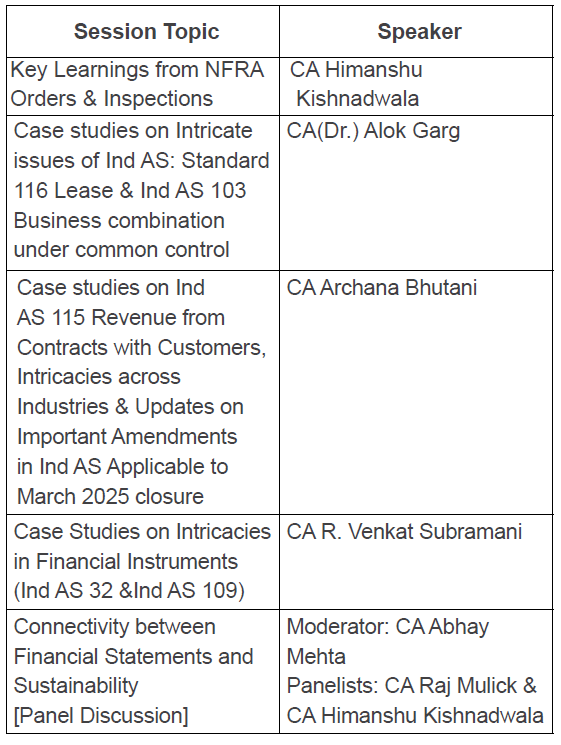



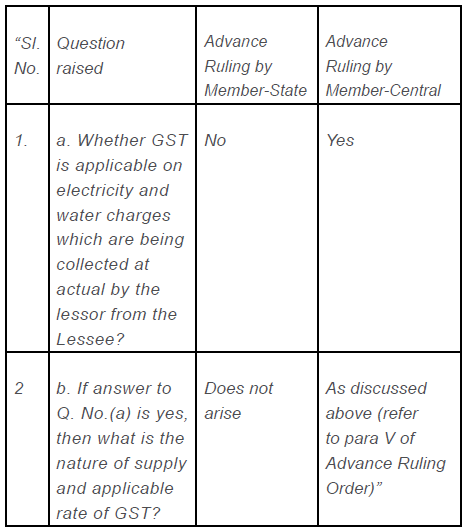
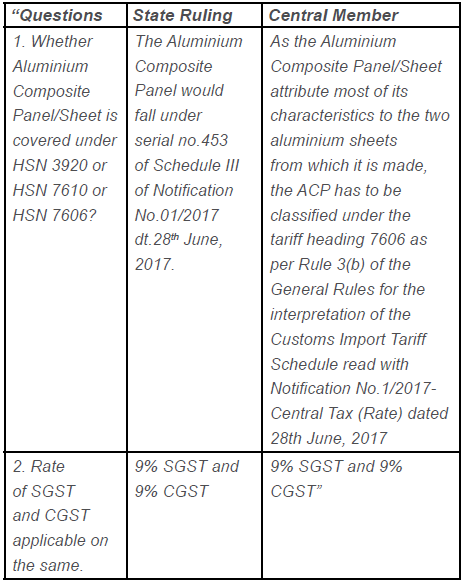

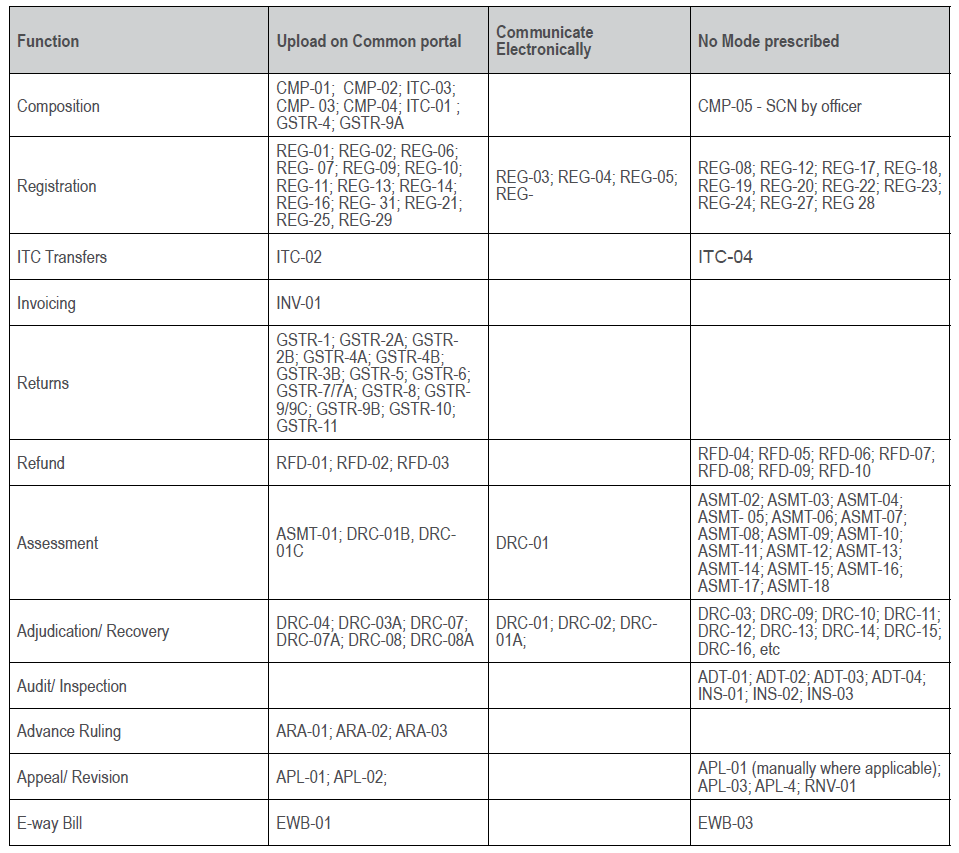


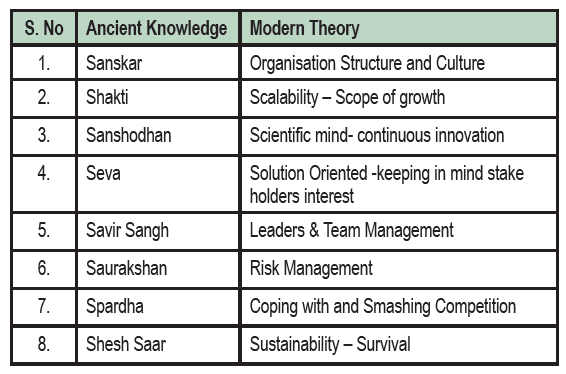


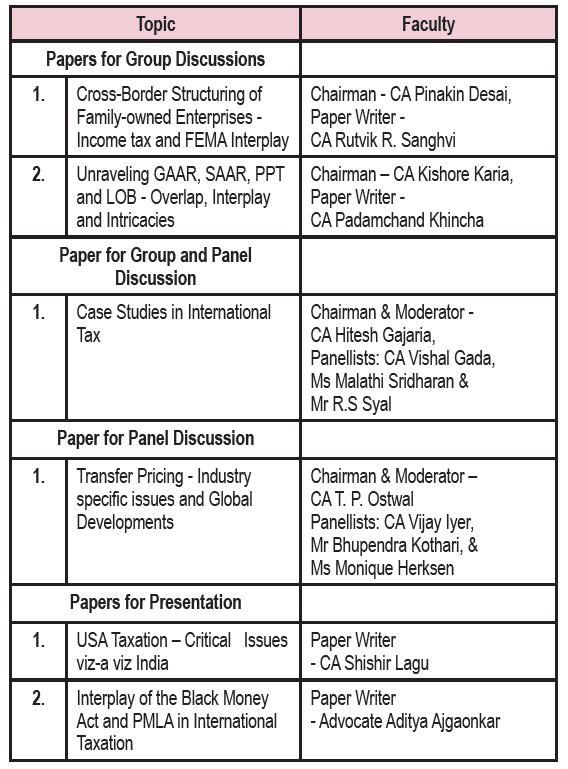

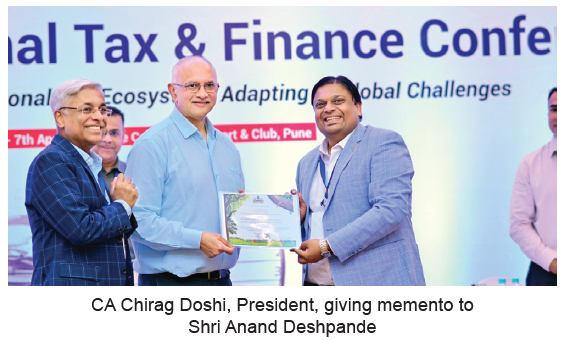
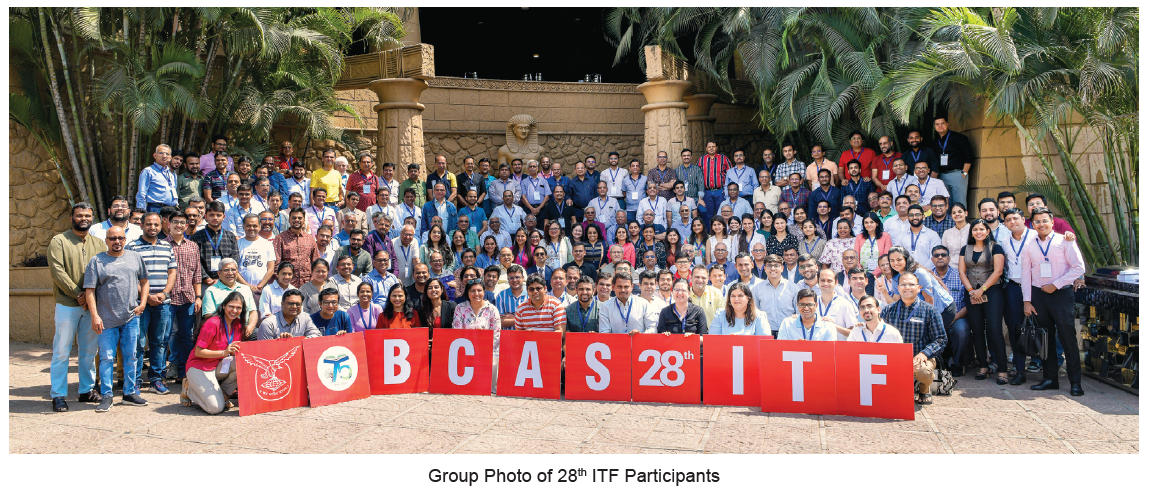

















 ESI, Bonus & Gratuity Act, Shop and Establishment Act:-
ESI, Bonus & Gratuity Act, Shop and Establishment Act:- A
A
 The
The







